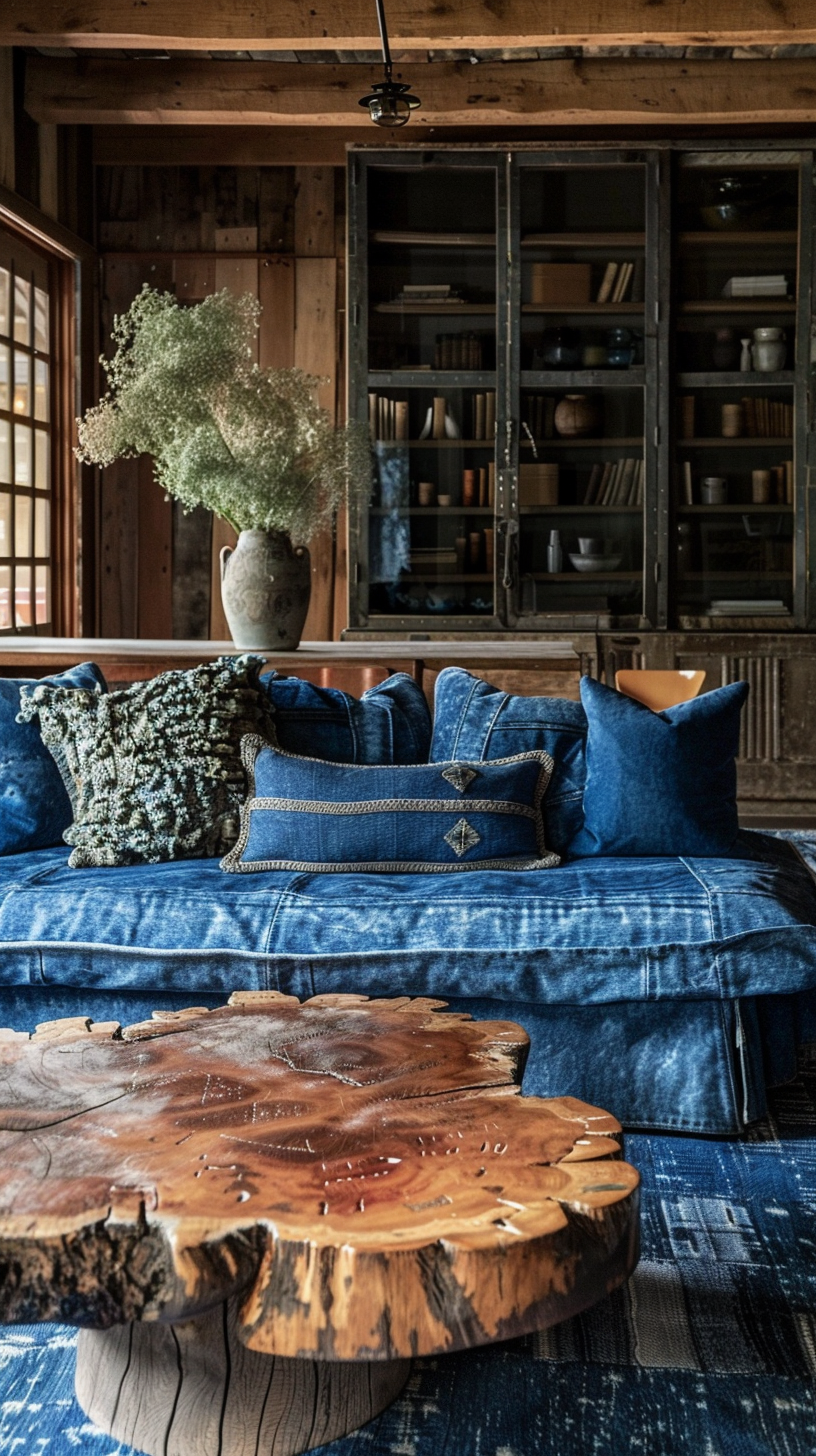If Beyonces Levii’s Jeans Were An Interior Design
We are embracing the trend of the country western style that cowboy Carter by Beyoncé has brought to the forefront of pop culture. Levi jeans is a sweet and flirty love song that makes me imagine. What an interior would look like with re-purposed denim as a material
Denim: A Brief History
Denim, a sturdy cotton warp-faced textile in which the weft passes under two or more warp threads, originated in the French town of Nîmes under the name “serge de Nîmes”. The fabric was originally intended for workwear due to its durability and was later popularized in the United States by Levi Strauss in the 19th century, particularly during the California Gold Rush.
Levi’s Jeans
Levi Strauss, a German immigrant, arrived in San Francisco in 1853 during the Gold Rush, intending to open a west coast branch of his brothers’ New York dry goods business. The creation of Levi’s jeans followed a significant event: the innovation of using rivets to strengthen the points of strain on work pants. This idea, patented in 1873 by Levi Strauss and tailor Jacob Davis, transformed the way that work attire was made, leading to the birth of the original “blue jeans”. Over the decades, Levi’s jeans evolved from a utilitarian garment for miners into a symbol of fashion and rebellion, popular among various youth subcultures and becoming a staple in wardrobes worldwide.
Denim is a versatile and appealing material for interior design for several reasons:
1. Durability: Denim is a robust material known for its strength and longevity. This makes it an excellent choice for furniture upholstery, especially in high-traffic areas of a home or commercial space, as it can withstand wear and tear.
2. Aesthetic Appeal: Denim has a unique, casual look that can add a rustic or industrial charm to a room. Its texture and color, typically in various shades of blue, can serve as a neutral base or a focal point, depending on the design.
3. Versatility: Denim can be incorporated into various styles, from modern to country, and complements many types of decor. It works well with other materials, such as wood, metal, and glass, allowing for creative and flexible design options.
4. Comfort: As a fabric, denim is soft and becomes even softer over time. This makes it comfortable for use in upholstered items like sofas, chairs, and even headboards.
5. Eco-Friendly Options: Recycled denim is an excellent choice for those looking to reduce environmental impact. Using upcycled denim not only helps recycle waste but also provides a sustainable option for eco-conscious designers.
6. Acoustic Properties: Denim is relatively dense and can help absorb sound, making it a practical choice for busy areas or in spaces that require sound dampening, like studios or open-plan offices.











